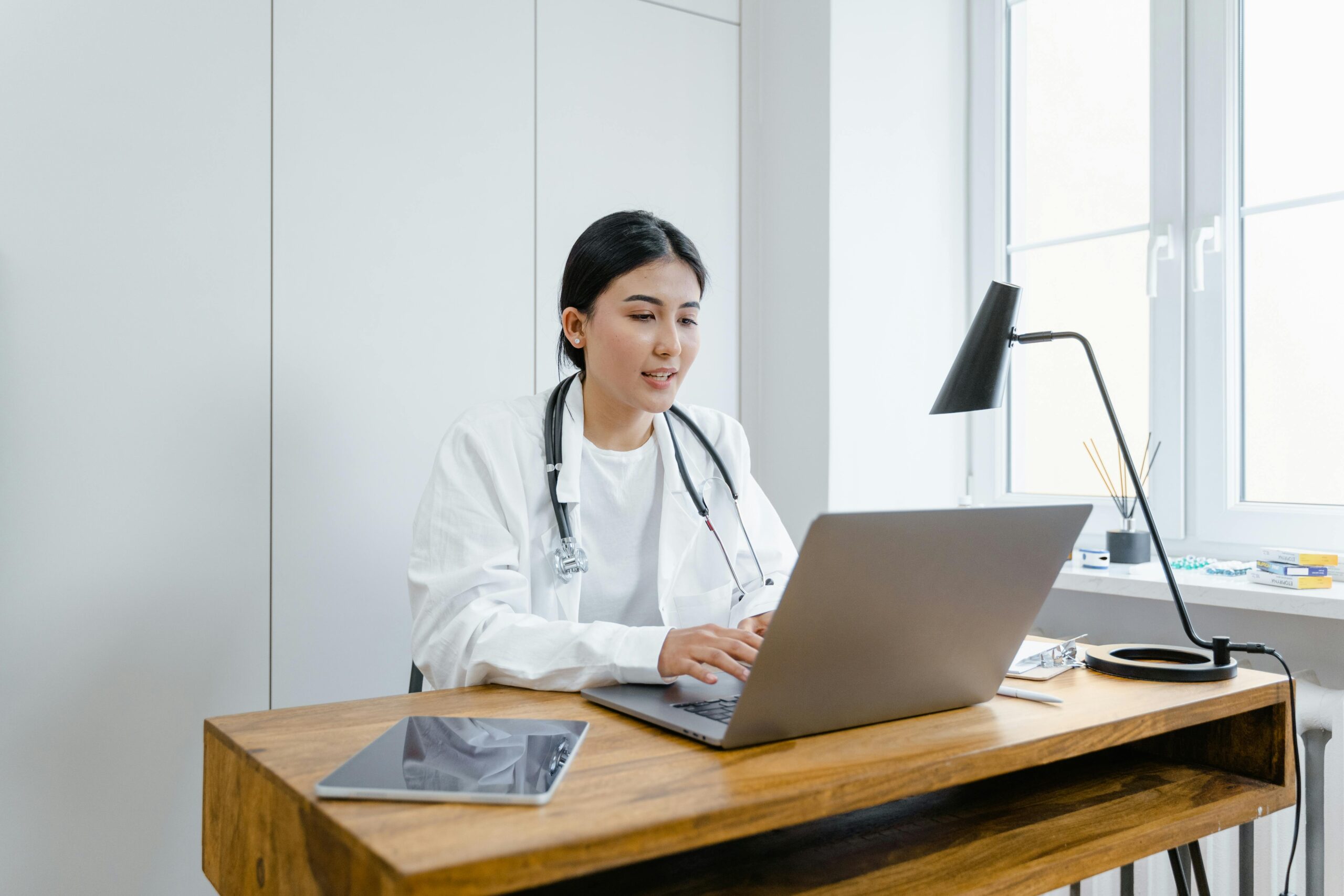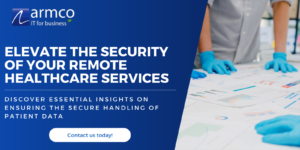
How To Securely Deliver Remote Healthcare Services
Like many other sectors, British healthcare has seen a wider adoption of remote healthcare services. This in part is thanks to the Covid-19 pandemic and the shift towards remote working that followed. Now, many healthcare providers and service users are holding consultations remotely and using remote healthcare platforms to deliver their services.
While convenient and expanding the access to care, there is also a crucial dimension of cybersecurity to consider. This is because important patient data will need to be digitally stored and communicated across more touchpoints in order to deliver these services. If you work in the medical or health services, we will show you how to ensure that remote healthcare services are delivered securely.
Cybersecurity for Remote Healthcare Services
Remote healthcare services involve delivering consultations and treatments using digital platforms. This may be a consultation via a video call or messaging, remote monitoring tools for patient IoT devices or digital systems and platforms. All need to be carefully considered to deliver a secure experience on all fronts.
For example, connecting to your platforms using home routers, personal computers or mobile devices can present vulnerabilities that can be exploited by cybercriminals. IoT devices can also present vulnerabilities that can be used by cyber threats to access data. A number of tools can help with remote cybersecurity challenges. These include VPNs, encryption tools and intelligent network threat detection and prevention systems.
Securing Your Network, Devices and Users
There is a lot to consider when delivering these remote services. There are tools, such as NHS Identity Service, and frameworks like the Data Security and Protection Toolkit available (and often required!) for organisations delivering services for the NHS or collaborating with it. These can help to ensure that your remote services are delivered securely.
For organisations working more independently of the NHS, there are three key pillars for delivering remote health services more securely.
Network
Your network includes the routers, work devices, servers, IoT devices, switches and your other infrastructure and devices that connect with each other. Your network is the foundation for your IT environment and your cybersecurity alike. When services are delivered remotely, this can expand the attack surface of potential vulnerabilities that cybercriminals can exploit to gain a foothold in your network.
Work devices
Delivering services remotely can risk things such as your team using their personal devices to access work resources. Conversely, they may use their work devices to access personal apps and services. You can help to secure your organisation by, for example, using device management tools and policies and installing antivirus and patch management software.
Users
Users working from home while delivering remote healthcare services can end up being caught in the crosshairs of phishing attackers. These attackers will often use targeted email addresses and messaging to try to get healthcare staff to release sensitive information, such as their credentials.
Taking care to train your users to recognise these threats and respond to them is key as user error is the cause of many cyber incidents.
Get In Touch to Discuss Your Own Half-Hour Cyber Awareness Training
Human error is the cause of the vast majority of cyber incidents. Get in touch with us today to arrange a cyber aware awareness training session for your business and transform your weakest security link into your strongest security and compliance protection asset.
Our sessions equip teams with cybersecurity best practices and the ability to detect even sophisticated phishing threats. This will enable your business and its compliance posture to focus on what it does best, uncompromised by today’s cyber threats.
Your Key Cybersecurity Measures for Remote Healthcare Services
There are a range of key defences you can put in place to shore up the security of your remote healthcare services. We have grouped these into three categories:
1. Communication and Network Security
End-to-End Encryption: Ensure that you are using encryption tools wherever data is stored and communicated. These will enhance the security and anonymity of your sensitive data. For example, you can encrypt files on devices, emails and communications between your services.
Secure Network Access: Ensure your Wi-Fi networks are secure if your team are accessing sensitive data remotely. Ensure they use a powerful VPN that offers security and convenience. Use work device management tools to enforce a secure access and use policy.
Secure Patient Portals: These portals can offer a safe and compliant way for communicating and managing patients and service users if they are not in place already.
2. Access Management and Data Integrity
Multi Factor Authentication (MFA) Tools: Implement MFA on as many applications and services as you can for both your team and service users alike. This will offer an extra layer of security against cyber threats even if they gain access to user credentials.
Data Backup and Recovery Plan: It is crucial for continuity and to meet data protection requirements that a data backup and recovery solution is in place.
Regular Software Updates and Patch Management: Keeps systems up-to-date and secured against known vulnerabilities. Review your vendors’ hardware and software to ensure it is still being supported with regular updates where applicable.
3. Proactive Defence and Cyber Readiness
Offer User Awareness Training: Train new and existing staff regularly on cybersecurity threats and data protection best practices.
Conduct Vulnerability Assessments and Penetration Testing: Work with Armco IT to test the security of your network practically and offer actionable insights for addressing any vulnerabilities found.
Create An Incident Response Plan: This plan will enable you to respond to different incident scenarios, including data breaches, more systematically, quickly and effectively.
Implement Device Management Tools: These tools can help you to ensure your network is only accessed by authorised devices and that these devices are used in alignment with your IT policy.
Final Thoughts
By implementing these cybersecurity measures, you can better ensure that your organisation and patient data remains secure. Remote health services are in many ways the future. However, it is important to ensure that your digital premises remain secure in the process of delivering better healthcare services to patients, wherever they may be.
Featured image by Tima Miroshnichenko: https://www.pexels.com/photo/a-woman-in-white-coat-using-a-macbook-8376232/
Armco IT: IT Support and Managed Services for Businesses Across York, North and East Yorkshire
Armco IT Solutions is dedicated to providing top-tier IT support and managed services across Yorkshire, including York, North and East Yorkshire. From our headquarters in Malton, our expert team of engineers is committed to helping businesses overcome technical challenges and achieve their goals. Our comprehensive solutions encompass cloud services, cybersecurity, network infrastructure and more, tailored to meet the specific needs of businesses in Yorkshire and beyond. Trust Armco IT Solutions as your reliable technology partner for scalable solutions and unparalleled support In Yorkshire and the surrounding area; Contact us today!
Related Articles: https://armco-it.co.uk/4g-solutions-for-home-remote-workers/




